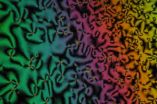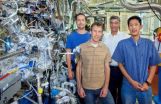(Press-News.org) Phishing scams are making the leap from email to the world's voice systems, and a team of researchers in the Georgia Tech College of Computing has found a way to tag fraudulent calls with a digital "fingerprint" that will help separate legitimate calls from phone scams.
Voice phishing (or "vishing") has become much more prevalent with the advent of cellular and voice IP (VoIP) networks, which enable criminals both to route calls through multiple networks to avoid detection and to fake caller ID information. However each network through which a call is routed leaves its own telltale imprint on the call itself, and individual phones have their own unique signatures, as well.
Funded in part by the National Science Foundation, the Georgia Tech team created a system called "PinDr0p" that can analyze and assemble those call artifacts to create a fingerprint—the first step in determining "call provenance," a term the researchers coined. The work, described in the paper, "PinDr0p: Using Single-Ended Audio Features to Determine Call Provenance," was presented at the Association for Computing Machinery's Conference on Computers and Communications Security, Oct. 5 in Chicago.
"There's a joke, 'On the Internet, no one knows you're a dog.' Now that's moving to phones," said Mustaque Ahamad, professor in the School of Computer Science and director of the Georgia Tech Information Security Center (GTISC). "The need is obvious to build security into these voice systems, and this is one of the first contributions to that research area. PinDr0p needs no additional detection infrastructure; all it uses is the sound you hear on the phone. It's a very powerful technique."
PinDr0p exploits artifacts left on call audio by the voice networks themselves. For example, VoIP calls tend to experience packet loss—split-second interruptions in audio that are too small for the human ear to detect. Likewise, cellular and public switched telephone networks (PTSNs) leave a distinctive type of noise on calls that pass through them. Phone calls today often pass through multiple VoIP, cellular and PTSN networks, and call data is either not transferred or transferred without verification across the networks.Using the call audio, PinDr0p employs a series of algorithms to detect and analyze call artifacts, then determines a call's provenance (the path it takes to get to a recipient's phone) with at least 90 percent accuracy and, given enough comparative information, even 100 percent accuracy.
Patrick Traynor, assistant professor of computer science, said that though the technology is modern, vishing is simply classic wire fraud: Someone gets a call which based on caller ID information appears legitimate, and the caller asks the recipient to reveal personal information like credit card and PIN details. During a five-day period in January 2010, bank customers in four U.S. states received fraudulent calls exactly like this, and instances of vishing date back at least to 2006.
PinDr0p is doubly effective for fraud detection, Traynor said, because it relies on call details outside the caller's control. "They're not able to add the kind of noise we're looking for to make them sound like somebody else," he said. "There's no way for a caller to reduce packet loss. There's no way for them to say to the cellular network, 'Make my sound quality better.'"
In testing PinDr0p, the researchers analyzed multiple calls made from 16 locations as far flung as Australia, India, United Arab Emirates, United Kingdom and France. After creating a fingerprint for calls originating from each location, they were able to correctly identify subsequent calls from the same location 90 percent of the time. With two confirmed fingerprints on a call, they could identify subsequent calls 96.25 percent of the time; with three it rose to 97.5 percent accuracy. By the time researchers had five positive IDs for a certain call, they could identify future calls from that source 100 percent of the time.
But PinDr0p does have its limitations—for the moment. "Call provenance doesn't translate into an individual's name or a precise IP address," said Vijay Balasubramaniyan, a Ph.D. student in computer science, who presented the PinDr0p paper in Chicago.
However Balasubramaniyan, Ahamad and Traynor are actively working on the next step: Using PinDr0p not just to trace call provenance, but to geolocate the origin of the call.
"This is the first step in the direction of creating a truly trustworthy caller ID," Traynor said.
INFORMATION: END
DENVER (October 5, 2010) - With over 500 million users worldwide, Facebook has become a global phenomenon, a vast cyber neighborhood where friends meet to share photos, news and gossip.
But when those relationships sour, another phenomenon often occurs – unfriending.
In what may be the first comprehensive study of its kind, a University of Colorado Denver Business School student has revealed the top reasons for Facebook unfriending, who is unfriended and how they react to being unfriended.
"Researchers spend a lot of time examining how people form friendships online ...
Optical gyroscopes, also known as rotation sensors, are widely used as a navigational tool in vehicles from ships to airplanes, measuring the rotation rates of a vehicle on three axes to evaluate its exact position and orientation. Prof. Koby Scheuer of Tel Aviv University's School of Physical Engineering is now scaling down this crucial sensing technology for use in smartphones, medical equipment and more futuristic technologies.
Working in collaboration with Israel's Department of Defense, Prof. Scheuer and his team of researchers have developed nano-sized optical gyroscopes ...
ST. LOUIS – Thanks to a discovery by a Saint Louis University researcher, scientists have identified an important microRNA that may allow us to better control cholesterol levels in blood.
Led by Ángel Baldán, Ph.D., assistant professor of biochemistry and molecular biology at Saint Louis University and published in a recent issue of Proceedings of the National Academy of Sciences of the United States of America, the study found that the microRNA miR-33, may be key to controlling HDL, or "good" cholesterol levels.
In the U.S., heart attack, stroke, and peripheral ...
Causal relationship between rainfall and earthquakes detailed
This review article explores natural crustal earthquakes associated with the elements of the hydrologic cycle, which describes the continuous movement of water on, above and below the surface of the Earth, including hurricanes and typhoons. The theory of hydroseismicity, first articulated in 1987, attributes most intraplate and near-intraplate earthquakes, to the dynamics of the hydrological cycle.
The Hydroseismicity hypothesis suggests variations in rainfall affect pore-fluid pressure at depth and can ...
WASHINGTON, DC, October 5, 2010 — In a study of earnings inequality among white women, researchers at the University of Massachusetts Amherst find that having children reduces women's earnings, even among workers with comparable qualifications, experience, work hours and jobs. While women at all income levels suffer negative earnings consequences from having children, the lowest-paid women lose the most from motherhood. This earnings penalty ranges from 15 percent per child among low-wage workers to about 4 percent among the highly paid. The findings are published in the ...
JUPITER, FL, October 5, 2010 - Scripps Research Institute scientists have shown for the first time that the neurotransmitter serotonin uses a specialized signaling pathway to mediate biological functions that are distinct from the signaling pathways used by hallucinogenic substances. The new findings could have a profound effect on the development of new therapies for a number of disorders, including schizophrenia and depression.
The study was published in the October 6, 2010 issue of the Journal of Neuroscience.
Serotonin has tremendous influence over several brain ...
Chemists at Vanderbilt University have created a new class of liquid crystals with unique electrical properties that could improve the performance of digital displays used on everything from digital watches to flat panel televisions.
The achievement, which is the result of more than five years of effort, is described by Professor of Chemistry Piotr Kaszynski and graduate student Bryan Ringstrand in a pair of articles published online on Sept. 24 and Sept. 28 in the Journal of Materials Chemistry.
"We have created liquid crystals with an unprecedented electric ...
After a decade of joint work involving 2,700 researchers from 80 countries, the world's scientists – as well as the general public – can now access the Census of Marine Life, which provides the first in-depth look at the more than 120,000 diverse species which inhabit our oceans.
The Census of Marine Life initiative, started in 2000, is the result of one of the largest scientific collaborations ever conducted , the result of more than 540 expeditions and 9,000 days at sea, plus more than 2,600 academic papers published during that period.
The just-released census paints ...
Measuring a fuel cell's overall performance is relatively easy, but measuring its components individually as they work together is a challenge. That's because one of the best experimental techniques for investigating the details of an electrochemical device while it's operating is x-ray photoelectron spectroscopy (XPS). Traditional XPS works only in a vacuum, while fuel cells need gases under pressure to function.
Now a team of scientists from the University of Maryland, the U.S. Department of Energy's Sandia National Laboratories, and DOE's Lawrence Berkeley National ...
New neuroscience research by life scientists from UCLA and Australia may potentially help people who have lost their ability to remember due to brain injury or disease.
By examining how we learn and store memories, these scientists have shown that the way the brain first captures and encodes a situation or event is quite different from how it processes subsequent similar events.
The study is published in the Sept. 29 edition of the online journal PLoS ONE, a publication of the Public Library of Science.
Memories are formed in the part of the brain known as the ...

